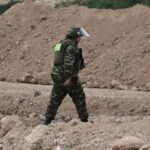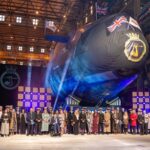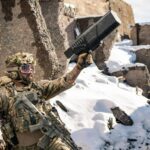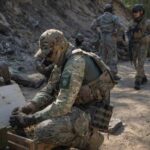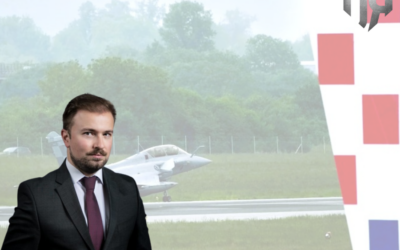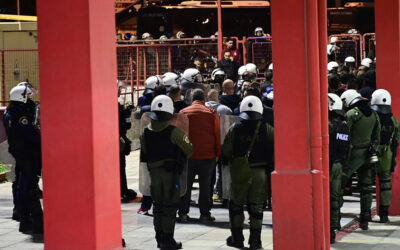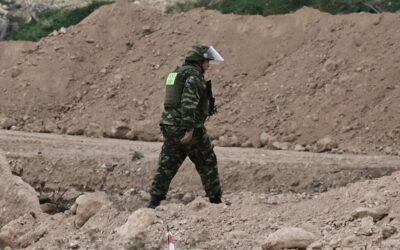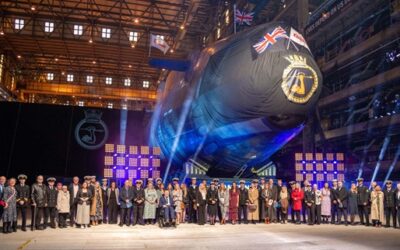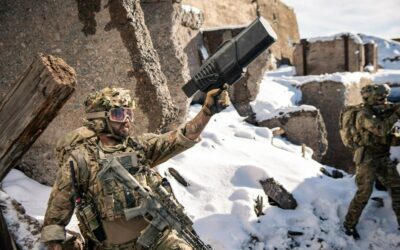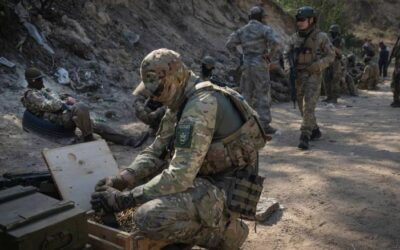It has only been a few months since Croatia started receiving the first of the Rafale fighter jets it ordered from France.

Myriounis Nikolaos*
Based on the current and emerging security threats and challenges in the geostrategic landscape, there is a constant increasing need for a strong and dense defence posture in Europe.
In the mid to long term, this posture will be built mainly by the development, acquisition, and support of interoperable forces and capabilities.
Standardization in Defence is becoming increasingly more critical for achieving, enhancing, and maintaining a level of readiness and interoperability within and between European armed forces and is required for credible deterrence and military operations. It also contributes to cost savings in terms of production runs and cost management.
At the moment, there is no general alignment on this throughout the European Defence and Space Industrial Ecosystem in order to improve capability development and to support the competitiveness of the European Defence Industry.
Building up interoperable and cost-effective capabilities is obviously a long-term endeavor which requires, according to the international best practices, the following strategic approach:
- Development or Harmonization of Defense, Security, and Industrial Strategies. By harmonizing defense, security, and industrial strategies we are driving the development of dual-use / hybrid capabilities to meet emerging defense and security challenges, strengthening interoperability, optimizing in parallel the use of available resources, and strengthening the Defense Industrial Technological Base.
- Synchronization of national defense planning with international defense planning projects. The synchronization and harmonization of national and international defense planning projects allow us to strengthen interoperability in multinational coalitions, join Smart Defense and Pooling and Sharing (Cluster) Multinational Programs sharing the burden costs, participating in new technologies, and strengthening the role of the National Industrial Technological Base in international consortia supporting the economic growth.
- Establishment of a Defense Accreditation and Certification System. It is fundamental for all defense organizations to establish a Defense Accreditation and Certification System in order to ensure conformity of the defense equipment with the defense standards provisions. This system safeguards the reliability, maintainability, and life-cycle of defense materiel and guarantees that the systems meet the required interoperability criteria set while we are designing the related defense capability.
- Establishment of a mutual defense qualification acceptance system with Allies and partner nations. A mutual defense qualification acceptance system is considered essential, especially between allies that are engaged in the form of consortium in the development of defense capabilities and the co-production or the follow-on support of defense equipment. This system recognizes and accepts the accreditation and certification systems established by the consortium parties, avoiding duplication of efforts and time/money-consuming procedures on the certification of defense materiel standards during the production and/or acquisition and follow-on support of defense equipment.
- Establishment of a strong link between National SDOs, Academia, Industry, and Defense and Security Stakeholders. Estimations on product cost savings following a more intensive use of civil standards by the military sector range from 10% up to 50%. On this basis, the cooperation of all stakeholders on defense, security, and civil standardization, including academia offering research and innovation is fundamental to optimize the use of resources, maximize operational effectiveness, and upgrade qualitative services and products in both the civil and defense arena.
- Establishment of Higher Education and Training on Defense Planning, Acquisition, and Standardization. Quality is not an act, it is a habit. Building a robust mindset on defense planning, acquisition, and standardization best practices, is fundamental for developing interoperable capabilities. The human dimension of interoperability is considered even more critical than the technical and procedural ones towards successful capabilities development. To this end, it is necessary for all defense organizations around the world to establish higher education on Defense Planning, Acquisition, and Standardization.
- Application of best practice standards in defense procurement and throughout the life-cycle of the defense equipment. The application of the best practice defense and civil standards in the defense procurement guaranteeing the reliability and maintainability of the defense equipment, stretching the life-cycle of the equipment to the maximum possible extent, reducing in parallel its cost, and facilitating interoperability with future defense acquisition programs.
- Application of best practice standardization management policies, strategies, structures, processes, and tools. Defense Standardization bodies have a critical role in qualifying interoperable capabilities. On this, it is essential for a defense standardization organization to establish a defense standardization policy (what), a related strategy (how) an integrated structure (one-stop service) for overseeing and harmonizing standardization activities, a dynamic process for developing, and maintaining, and managing defense standards integrated within the defense planning process and the necessary tools (databases, collaborative platforms, tracking tools) for the management of standardization projects and facilitating the capabilities related interoperability profiles.
In other words, the key challenge for the military forces is to be “born interoperable”. The answer in this is to build-up capabilities with the formulation of interoperability requirements and the implementation of best practice standardization solutions in the capability pillars of Doctrine, Organization, Training, Materiel, Leadership, Personnel, Facilities (DOTMLPF).
Further details and advice on building up interoperable defense capabilities are provided at the DEFSTAND PC official website.
* Captain (Ret) Nikolaos Myriounis Hellenic Navy
**The views and/or comments expressed in the articles belong to each author and may not constitute an opinion and/or position and/or be adopted as is by the company and/or the site administrators. More in the terms of use of the website.
READ MORE
The role of SERIOUS GAMES in the development of skills on Defense Standards
In an increasingly complex world, one vital factor for any successful organization is continuous capability building.
Incident in Renti | “We, in the platoons, are all one”
The police are looking for the perpetrator – among the 424 suspects arrested – of the attack that took place at the end of…
A reluctant alliance? A different approach to French – Serbian defence relations
It has only been a few months since Croatia started receiving the first of the Rafale fighter jets it ordered from France.
Elliniko | 314 bombs buried at former airport
Over 300 bombs from the Second World War have been found at the old airport of Athens in Elliniko. The news about the said…
Agamemnon | The new Astute-class HMS nuclear submarine of the Royal Navy
The British Royal Navy has named the newly-built Astute-class nuclear-powered submarine HMS Agamemnon. Doing so, the…
NSPA | Awards first C-sUAS multinational contract in NATO’s history
The NATO Support and Procurement Agency (NSPA) has approved the first Counter-small UAS (C-sUAS) procurement framework agreement…
USA | Signs bill on military aid to Ukraine
US President Joe Biden has signed a bill providing Ukraine with billions of dollars in new aid for its war with Russia, marking a rare…
Armenian Genocide Remembrance Day
On this day, 109 years ago, the genocide of the Armenian people by the Ottoman Empire began, with April 24 being the day of…









